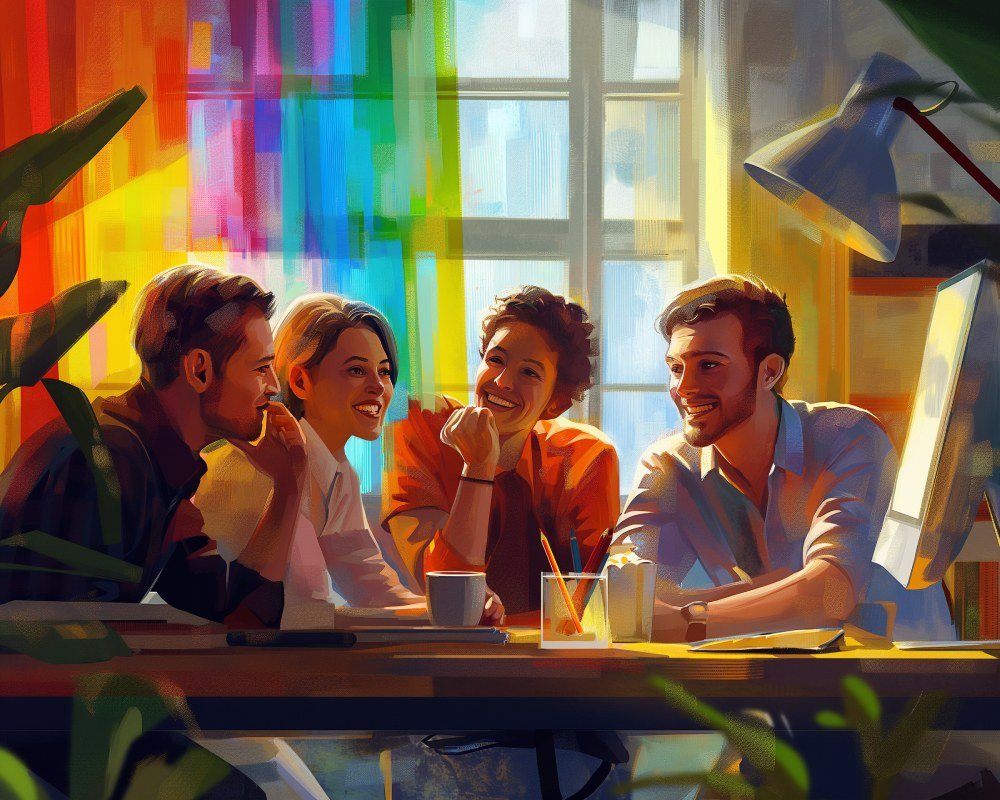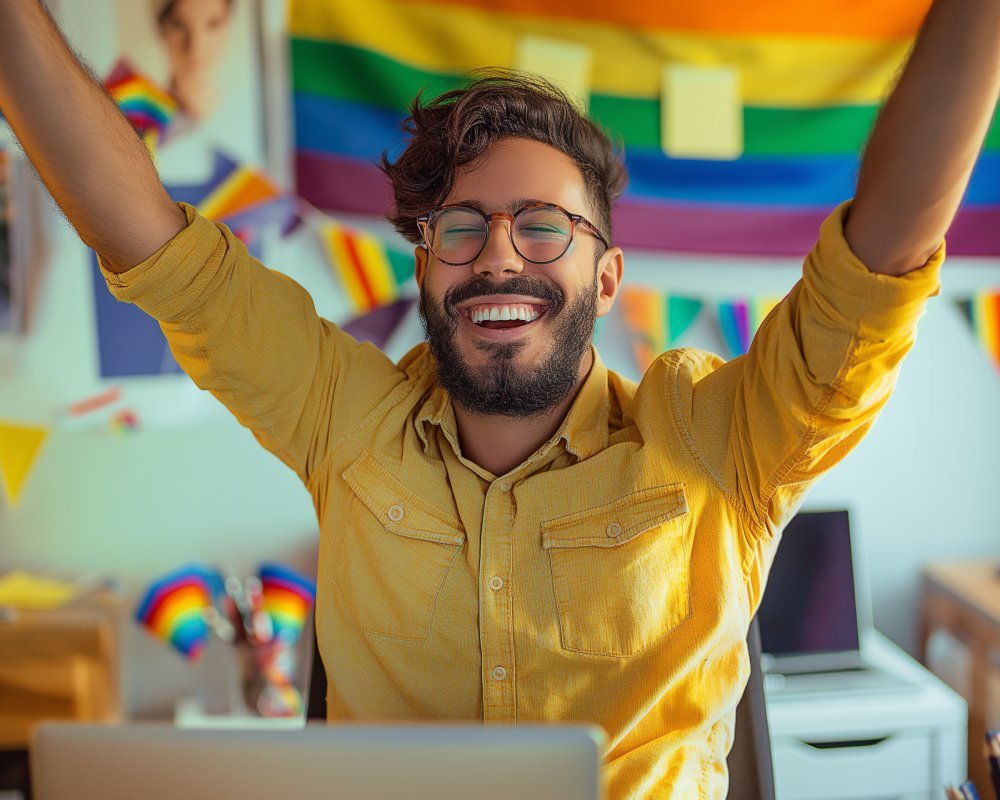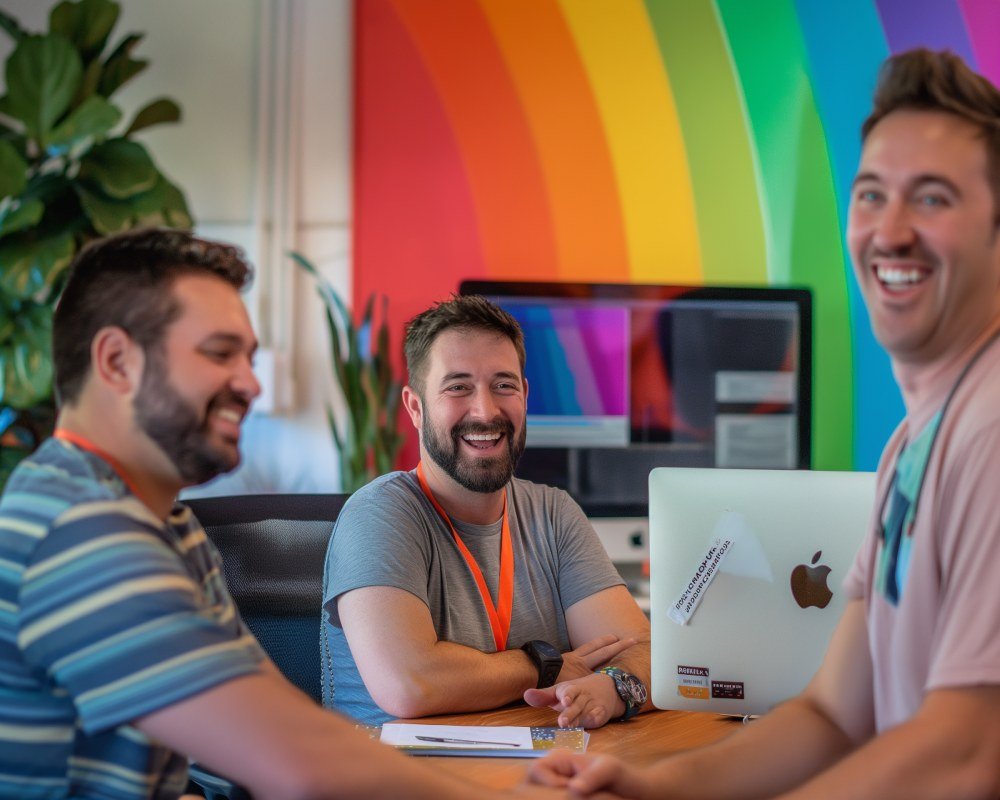
Why Is There Still Discrimination Against Gays? – The LGBTQ+ community has long been a vibrant and integral part of society across the globe. Despite significant progress in recent decades regarding LGBTQ+ rights and acceptance, discrimination against gays, lesbians, transgender individuals, queer and bi individuals persists today. The question remains, “Why Is There Still Discrimination Against Gays?” Understanding the roots and continuance of this discrimination is essential to developing strategies to combat it effectively. This post delves into the various facets of this discrimination, examining its historical, social, political, and cultural origins. Furthermore, it will explore how businesses, with the guidance of specialized agencies like Gay Thrive LGBTQ+ Marketing Agency, can better connect with and support the LGBTQ+ community by understanding their unique challenges and needs.
1. Historical Perspectives: How Prejudices Formed
The historical context of discrimination against gays reveals centuries of deep-seated prejudices rooted in religious, cultural, and legal systems. In many societies, homosexuality was condemned, and people identifying as such often faced severe penalties, including imprisonment and even death. These punitive measures were often justified by religious texts or traditional beliefs that normalized heterosexual relationships as natural or divine. Understanding “Why Is There Still Discrimination Against Gays?” requires investigating these historical viewpoints. Despite legislative progress in many parts of the world, historical stigmas linger, influencing societal attitudes. Centuries of discrimination have left enduring scars, perpetuating stereotypes and beliefs that continue to fuel anti-LGBTQ+ sentiments today. These historical biases can manifest even insidiously in modern systems, whether through institutional policies or cultural narratives. Recognizing these roots is the first step in addressing and dismantling them.

2. The Current Social Climate: Acceptance and Misunderstandings
In today’s more connected world, one might assume that acceptance would be more widespread, yet discrimination against the LGBTQ+ community remains prevalent. The question, “Why Is There Still Discrimination Against Gays?”, is often rooted in societal misunderstanding and misinformation. Misinformation can lead to stereotypes and fears, often instilled from a young age through family, media, and education. Despite societal progress, these ingrained biases can cause significant harm by fostering environments where LGBTQ+ individuals feel unsafe or unwelcome. Moreover, despite genuine advancements in representation and rights, backlash and resistance to such progress often reinforce discrimination. Understanding contemporary social dynamics and promoting education can help combat these issues. Highlighting the benefits of inclusion and diversity in society is crucial and underscores the importance of breaking down misunderstandings and fostering acceptance.
Advertisement · Scroll to continue
Recommended
3. The Political Landscape: Legal Challenges and Advocacy
Political landscapes significantly impact the LGBTQ+ community and their daily lives. Laws and policies can either protect or discriminate against LGBTQ+ individuals. The ongoing struggle for equal rights and protections under the law is a cornerstone issue of “Why Is There Still Discrimination Against Gays?” Despite notable progress, such as the decriminalization of homosexuality and the legalization of same-sex marriage in many countries, some governments still enshrine discriminatory practices through legislation. For example, in some regions, laws do not protect against discrimination in the workplace or housing. Political leadership also plays a crucial role in shaping public discourse. Anti-LGBTQ+ rhetoric from political figures can incite violence and discrimination, reinforcing societal biases. Advocacy and political activism are essential in promoting and protecting LGBTQ+ rights, as they can influence policies and raise awareness about discrimination issues.

4. Cultural Influences: Media Representation and Public Perception
Culture and media significantly influence public perception and attitudes toward the LGBTQ+ community. Negative portrayals of gays, lesbians, transgender individuals, queer and bi people in the media can perpetuate harmful stereotypes and bias. While media representation has improved, the journey is far from over, raising the question, “Why Is There Still Discrimination Against Gays?” Sometimes, even when representation is present, it can be problematic, reducing individuals to stereotypes or background characters instead of fully developed human beings. Positive representation can help normalize LGBTQ+ identities and foster a more inclusive society by showcasing diverse stories and experiences. Through campaigns and representation, businesses have a unique opportunity to challenge these narratives, helping foster an accepting and inclusive social climate that embraces diversity as a strength.
5. Health Disparities and Access to Care
Discrimination against the LGBTQ+ community often extends into the healthcare system, causing significant disparities. The question remains, “Why Is There Still Discrimination Against Gays?”, especially in environments intended to be caring and supportive. Discrimination can manifest in various ways, including outright denial of care or substandard treatment. Furthermore, LGBTQ+ individuals may be reluctant to seek medical care due to fear of discrimination or past negative experiences. These barriers cause ongoing health disparities, impacting mental and physical health outcomes within the community. It is crucial to provide training and education for healthcare professionals to ensure a welcoming and knowledgeable approach to LGBTQ+ patients. Furthermore, advocating for policies that protect against discrimination in healthcare settings is vital. Addressing these health disparities is not only a matter of equality but of human rights.

Advertisement · Scroll to continue
Recommended
6. Religious and Moral Opposition
“Why Is There Still Discrimination Against Gays?” often leads back to religious and moral opposition faced by the LGBTQ+ community. Many religions have teachings that are interpreted as opposing LGBTQ+ identities, often leading to justifications for discrimination. In religious contexts, gays, lesbians, transgender, queer, and bi individuals might experience condemnation or exclusion from their spiritual communities. The impact of these religious beliefs extends beyond individual practices, influencing broader societal attitudes and policies. Building bridges between faith and LGBTQ+ rights involves fostering dialogue that respects religious beliefs while emphasizing the fundamental rights and dignity of every individual. Encouraging inclusive interpretations of religious texts and spotlighting religious leaders who advocate for LGBTQ+ rights can contribute to reducing discrimination.
7. The Economic Component: Financial Inequality and Employment Discrimination
Economic inequalities and employment discrimination against LGBTQ+ individuals remain significant barriers. Despite advancements in rights, the financial aspect demands a deeper look into “Why Is There Still Discrimination Against Gays?” Employment discrimination can manifest in hiring practices, promotions, and salary disparities, exacerbated by a lack of legal protections in some regions. Financial instability can lead to broader societal inequalities, impacting access to housing, education, and healthcare. Promoting LGBTQ+ inclusivity in workplaces is vital for economic equality and social progress. Businesses must strategize to include helpful benefits and policies that embrace diversity and nondiscrimination in the workplace. Companies can not only support LGBTQ+ rights but also benefit from the diverse perspectives and innovations brought forth by an inclusive workforce.

8. Combating Discrimination: Strategies and Benefits of Inclusion
Combating discrimination requires a concerted effort from all sectors of society. Addressing “Why Is There Still Discrimination Against Gays?” requires understanding that everyone plays a role in either perpetuating or dismantling these biases. Education and awareness campaigns are essential to challenge stereotypes and promote understanding and empathy. Supporting organizations and businesses that advocate for LGBTQ+ rights sends a clear message that discrimination is unacceptable. An inclusive society benefits everyone, creating environments where innovation and cooperation thrive. The Gay Thrive LGBTQ+ Marketing Agency provides invaluable resources and insight into targeting and connecting with the LGBTQ+ community while advocating for their inclusion and protection. With collective efforts, a fairer and more just society is possible where everyone, regardless of their sexual orientation or gender identity, can thrive.
The Role of Businesses in Supporting LGBTQ+ Rights
Businesses have a significant role in advancing LGBTQ+ rights and combating discrimination. Inclusive marketing and fair employment practices send a powerful message of acceptance and equality. Gay Thrive LGBTQ+ Marketing Agency assists businesses in understanding and engaging with the LGBTQ+ community authentically. Beyond policies, businesses can create inclusive environments by offering LGBTQ+ sensitivity training, benefits for same-sex partners, and initiatives supporting diversity and inclusion. These practices contribute to a more equitable workplace, reflecting positively on the business and society. Companies investing in these areas find enhanced innovation, loyalty, and market reach, demonstrating that supporting the LGBTQ+ community is morally advisable and economically beneficial.
Legal Frameworks and Policy Recommendations
Legal protections are essential for safeguarding LGBTQ+ rights and addressing discrimination. Despite progress in some regions, many countries still lack comprehensive laws protecting against discrimination based on sexual orientation or gender identity. Implementing and enforcing such policies at national and international levels is crucial for reducing discrimination and promoting equality. Advocating for inclusive legal frameworks is one way individuals and organizations can drive positive change. Government and advocacy groups must collaborate to ensure that laws protect LGBTQ+ individuals in all aspects of life, from employment to education to healthcare. By understanding “Why Is There Still Discrimination Against Gays?”, policymakers can create legislation to offer genuine protections and opportunities.
Education and Advocacy as Tools for Change
Education is a powerful tool for combating discrimination and promoting LGBTQ+ inclusion. Awareness programs in schools and workplaces can challenge prejudices, correct misinformation, and foster respect and understanding amongst diverse communities. Educators and stakeholders must advocate for curricula that inclusively support discussions about LGBTQ+ communities and history, highlighting their contributions and struggles. On a broader scale, advocacy campaigns help raise public awareness and mobilize support for LGBTQ+ rights. Groups and individuals can leverage social media and other platforms to advocate for change, encouraging discourse that challenges the question “Why Is There Still Discrimination Against Gays?” and promotes acceptance and justice.
Community Strength: Building a Supportive Environment
Building supportive environments is vital in reducing discrimination and empowering the LGBTQ+ community. Strong community networks offer invaluable resources and create spaces of acceptance, where individuals can express themselves authentically without fear. Local and national LGBTQ+ organizations play crucial roles in advocacy, providing support services and fostering connections. Creating alliances within broader communities, including allies, families, and businesses, enhances these supportive networks. When communities come together in solidarity, they amplify their capacity to affect meaningful change. Encouraging open dialogue, community events, and inclusive activities fosters a culture of understanding that challenges the foundations of discrimination and supports LGBTQ+ individuals genuinely.
By understanding the dynamics of discrimination and actively working to dismantle it, society can move toward inclusivity. Addressing the question “Why Is There Still Discrimination Against Gays?” requires a comprehensive approach that spans education, policy, advocacy, and community. Organizations like Gay Thrive LGBTQ+ Marketing Agency are at the forefront, providing vital support and guidance for connecting businesses with the LGBTQ+ community. Together, by unraveling the complexities of discrimination and celebrating diversity, society can ensure equality, respect, and justice for all, creating an environment where everyone thrives.
Advertisement · Scroll to continue

More Recommended
Inside Target’s Approach to Reaching and Engaging LGBTQ+ Shoppers
Inside Target’s Approach to Reaching and Engaging LGBTQ+ Shoppers – Inside Target’s Strategy for Reaching [...]
Breaking Barriers: LGBTQ+ Advertising in the 21st century
Breaking Barriers: LGBTQ+ Advertising in the 21st century – In the 21st century, marketing and [...]
10 Reasons to Choose Olivia Cruises for Your Next Vacation
10 Reasons to Choose Olivia Cruises for Your Next Vacation – Are you looking for [...]
Creating Authentic LGBTQ+ Content: Tips and Tricks
Creating Authentic LGBTQ+ Content: Tips and Tricks, In today’s increasingly diverse and inclusive world, creating [...]
Gay Representation in Video Games
Gay Representation in Video Games – Representation of LGBTQ+ individuals in video games has come [...]
Why Are Gay Pride Parades Important?
Why Are Gay Pride Parades Important? – Pride parades have become a staple in LGBTQ+ [...]
How Gay-Owned Brands are Redefining Marketing Strategies
How Gay-Owned Brands are Redefining Marketing Strategies In today’s ever-evolving and diverse world, it is [...]
The Importance of Gay Visibility in Politics
The Importance of Gay Visibility in Politics – As members of the LGBTQ+ community, it [...]
Best Gay Clubs in Barcelona for an Epic Night Out
Best Gay Clubs in Barcelona for an Epic Night Out – Barcelona, a vibrant city [...]